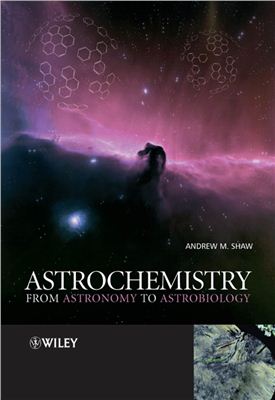John Wiley & Sons, Ltd, 2006, - 359 pages.
Astrochemistry draws its inspiration, language, fascination, beauty, elegance and confusion from many different disciplines: starting with astronomy, passing through physical chemistry and ending with the new ideas of astrobiology. Astrochemistry starts with the origins of the Universe and the theory of the Big Bang, resulting in the formation of hydrogen, helium and a little lithium. Gravity pulls the matter together to form stars, galaxies and clusters of galaxies, all of which give off light in some form. The light tells the molecular story with information on the formation and evolution of stars and the role of atoms.
Throughout the book author has tried to constrain the wonders of imagination inspired by the subject by using simple calculations. Can all of the water on the Earth have been delivered by comets: if so, how many comets? How do I use molecular spectroscopy to work out what is happening in a giant molecular cloud? Calculations form part of the big hard-sell for astrochemistry and they provide a powerful control against myth. Author has aimed the book at second-year undergraduates who have had some exposure to quantum mechanics, kinetics, thermodynamics and mathematics but the book could easily be adapted as an introduction to all of these areas for a minor course in chemistry to stand alone.
Astrochemistry draws its inspiration, language, fascination, beauty, elegance and confusion from many different disciplines: starting with astronomy, passing through physical chemistry and ending with the new ideas of astrobiology. Astrochemistry starts with the origins of the Universe and the theory of the Big Bang, resulting in the formation of hydrogen, helium and a little lithium. Gravity pulls the matter together to form stars, galaxies and clusters of galaxies, all of which give off light in some form. The light tells the molecular story with information on the formation and evolution of stars and the role of atoms.
Throughout the book author has tried to constrain the wonders of imagination inspired by the subject by using simple calculations. Can all of the water on the Earth have been delivered by comets: if so, how many comets? How do I use molecular spectroscopy to work out what is happening in a giant molecular cloud? Calculations form part of the big hard-sell for astrochemistry and they provide a powerful control against myth. Author has aimed the book at second-year undergraduates who have had some exposure to quantum mechanics, kinetics, thermodynamics and mathematics but the book could easily be adapted as an introduction to all of these areas for a minor course in chemistry to stand alone.

